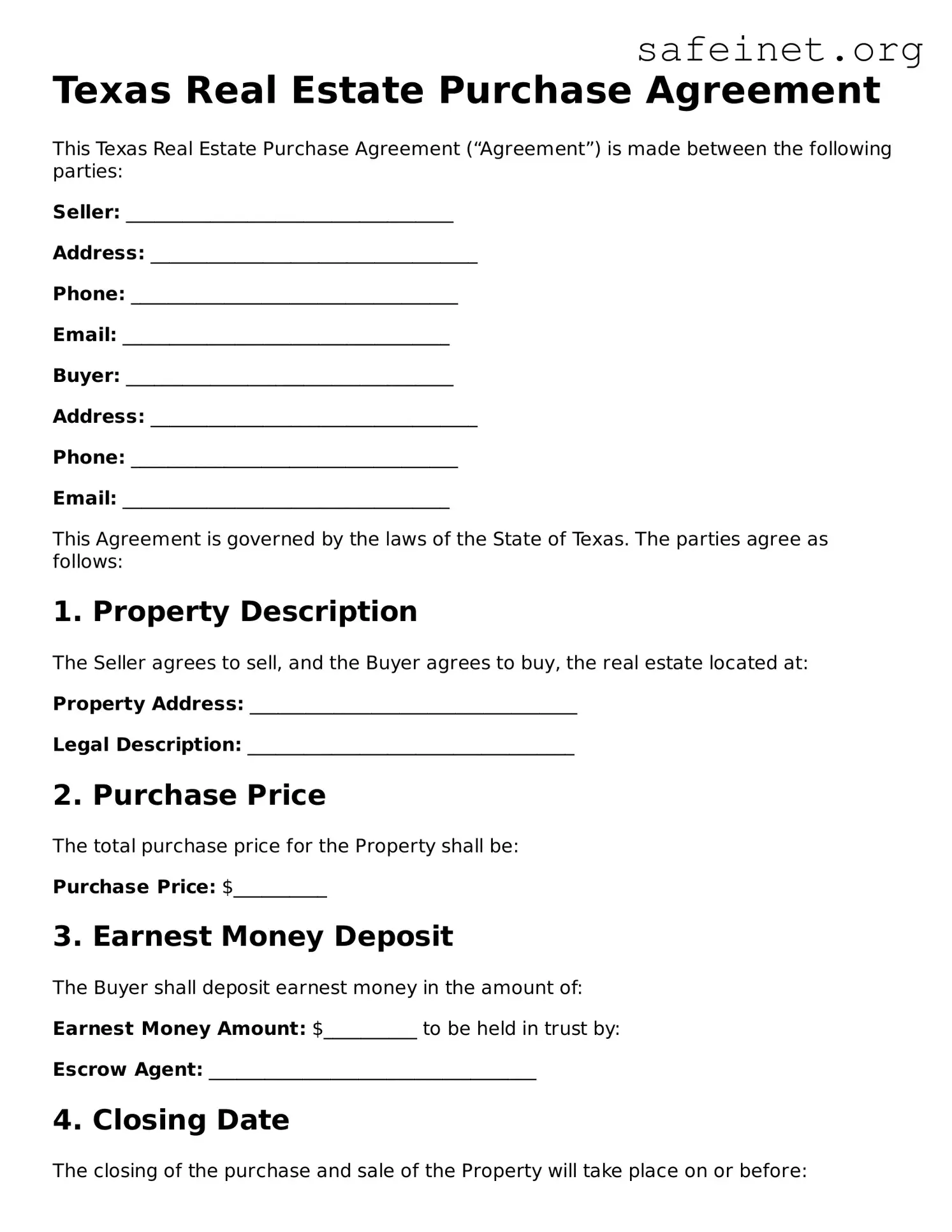Texas Real Estate Purchase Agreement
This Texas Real Estate Purchase Agreement (“Agreement”) is made between the following parties:
Seller: ___________________________________
Address: ___________________________________
Phone: ___________________________________
Email: ___________________________________
Buyer: ___________________________________
Address: ___________________________________
Phone: ___________________________________
Email: ___________________________________
This Agreement is governed by the laws of the State of Texas. The parties agree as follows:
1. Property Description
The Seller agrees to sell, and the Buyer agrees to buy, the real estate located at:
Property Address: ___________________________________
Legal Description: ___________________________________
2. Purchase Price
The total purchase price for the Property shall be:
Purchase Price: $__________
3. Earnest Money Deposit
The Buyer shall deposit earnest money in the amount of:
Earnest Money Amount: $__________ to be held in trust by:
Escrow Agent: ___________________________________
4. Closing Date
The closing of the purchase and sale of the Property will take place on or before:
Closing Date: _____________
5. Contingencies
This Agreement is contingent upon:
- Buyer obtaining financing.
- Satisfactory home inspection.
- Clear title to the Property.
6. Possession
The Buyer shall be entitled to possession of the Property on:
Possession Date: _____________
7. Disclosures
The Seller shall provide the Buyer with the following disclosures:
- Lead-based paint disclosure (if applicable).
- Seller's Disclosure Notice.
8. Governing Law
This Agreement shall be governed by the laws applicable in the State of Texas.
9. Signatures
IN WITNESS WHEREOF, the parties hereto have executed this Agreement as of the ___ day of __________, 20__.
Seller's Signature: __________________________
Date: _____________
Buyer's Signature: __________________________
Date: _____________
This template serves as a basic framework for a real estate agreement in Texas. Ensure to fill in the required fields and review it thoroughly before use.
